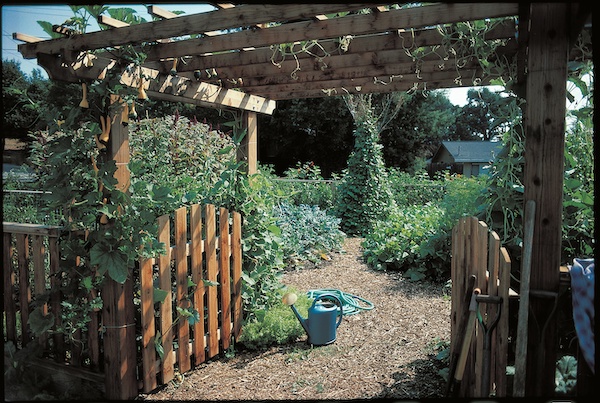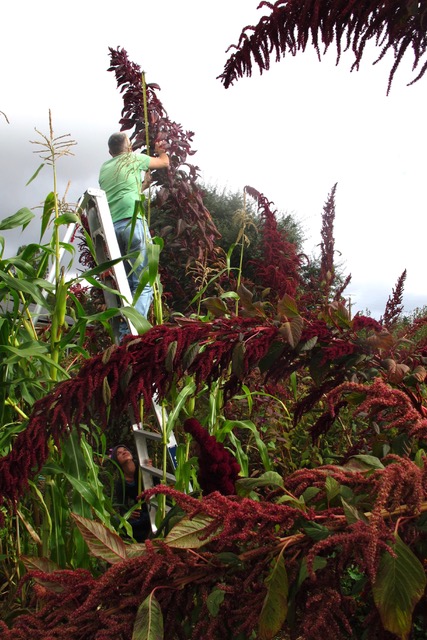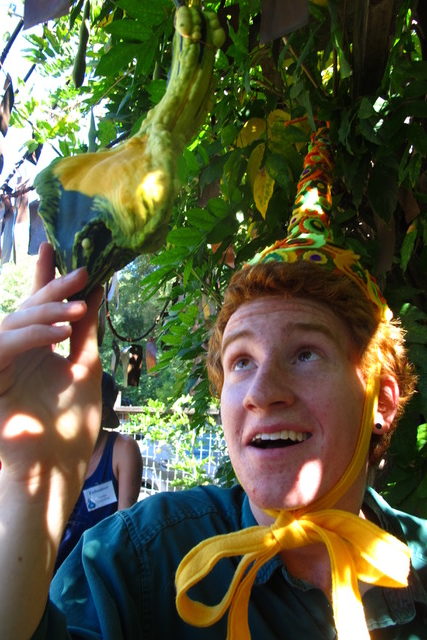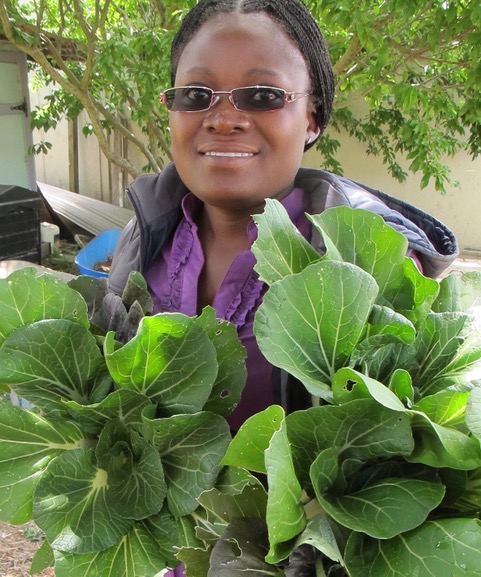
Partnership History
In the early 1990’s, the 80-acre piece of land and gardens now known as OAEC was being stewarded by the Center for Seven Generations (under Doug’s direction) and all of the Mother Garden produce at that time was being donated to Food for Thought. When OAEC came into being in 1994, a horticultural therapy program was established by Doug Gosling and Rachel Gardner (who eventually became FFT’s Deputy Executive Director and Client Services Manager.) They worked together to create a garden in the backyard of Henry House, then the Sonoma County AIDS hospice. The partnership continued to evolve when OAEC worked with FFT to create a garden around the new Food for Thought Building in 1999. Modeled after early the success of OAEC’s partnership with Harmony School to create a garden, half of the staff time was provided by OAEC & the other half by Food for Thought. Eventually, the program grew into what is now one of the core programs of the food bank.
Throughout the history of the project, the OAEC Nursery has provided all the seeds and plant starts. In turn, the Food for Thought garden has offered OAEC’s Mother Garden Biodiversity Program a valuable seed saving plot in which to grow out seed crops for several of our favorite varieties, including a 18′ tall amaranth from Namibia, shown here.
A significant overlap of volunteers has developed and there is a cohort of dedicated gardeners that show up to tend both the OAEC Mother Garden and the FFT garden on a regular basis. It is also worth mentioning that Doug came up with the idea for Calabash, FFT’s wildly successful fundraising event which ran for over 10 years called Calabash, a whimsical celebration of gourds featuring gourd-related art and music played on gourd instruments from around the world. It ran for over 10 years with OAEC as a co-sponsor.

The Garden
The Food for Thought Garden turns the typical stereotype of a food bank on its head: instead of dolling out bottom-of-the-barrel, “dented can” food in a callous, institutional setting, Food for Thought provides the healthiest produce grown in rich soil by happy, welcoming volunteers. The experience of arriving at the food bank and being greeted by an exuberant display of flowers, hummingbirds, and natural beauty to rival the even the most chic Sonoma County eateries is just the first step in helping clients feel a sense of dignity, support and inspiration for healing. Doug recalls a memorable moment when a client, standing in front of a profusion of royal purple larkspur flowers, said “This beauty gives me a reason to live today.”

Doug and Rachel’s vision for the FFT garden was that it would be a place where clients feel nurtured on every level, a place that physically and metaphorically encourages care for the land as a way to care for one’s own body. In addition to producing fresh, high value crops like strawberries, herbs, salad mix and cut flowers from the garden, the food bank also holds cooking classes using garden produce and offers nutritional counseling, empowering clients to take wellness into their own hands.
Clients and volunteers come to the FFT garden for many reasons, often as a means of working through their own grief for the loss of a loved one. Doug helped to design and install an AIDS Memorial in the garden, with a trellis draped with wisteria and surrounded by perennial plants used throughout history to support the spiritual and physical processes of both the dying and those left behind. Plant allies like white sage, angelica, bergamot, tobacco and rosemary used for remembrance, emotional healing, and for safe travel to the spirit realm are planted next to a water feature in the memorial. Visitors can inscribe the name of a loved one onto copper leaves that hang from the trellis and flutter to make a gentle sound in the wind.

Related Projects
OAEC and Food for Thought also sponsored Doug Gosling to travel to a sister project in Namibia, called Hope Initiatives, a soup kitchen and school for children who have been orphaned by the AIDS epidemic in Africa. His initial visit helped them to establish what is now a thriving garden that supplies their soup kitchen with important staple vegetables and herbs. Since then, Hope Initiatives staff have visited OAEC and Food for Thought several times.
Now and Into the Future
OAEC is incredibly proud of Doug and Food for Thought’s accomplishment in starting and sustaining one of the most impactful and enduring community garden projects in the region. As Doug pulls back to be closer to home in the spring of 2019, Food for Thought welcomes a new Garden Manager, Sorrel Allen. With deep roots and networks in the community, Sorrel is thrilled to continue to steward Doug’s loving legacy in the Food for Thought garden and is honored to share the magic, beauty, and nutritional goodness cultivated therein. The OAEC Nursery will continue to grow seedlings and seeds for FFT and there may be some interesting programmatic developments and potential for additional collaboration on the horizon.
Congratulations Doug and Welcome Sorrell! We look forward to many more years of gardening together.






